On Audi's Design, Smart Sedans, Safe Scooters and more
What is Audi doing for its design future? How many sensors makes a sedan “smart”? What makes an e-scooter safer? What does Akio Toyoda say about racing, and what is a Lexus named after the Fuji Speedway like to drive? Why is Brembo in Silicon Valley? How many EVs are being purchased? What defines a gasoline “superuser”? What can Allison’s new transmission for the construction and mining markets do?
Design Tips from Audi Design Chief Marc Lichte
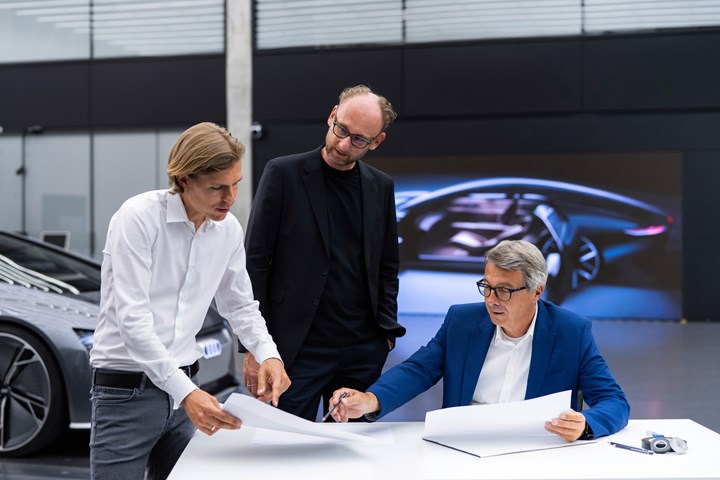
Philipp Römers, Head of Design Exterior (left); Marc Lichte, Head of Design (center); Norbert Weber, Head of Design Interior (right). (Image: Audi)
With the transition to electric and more highly automated (if not fully autonomous) vehicles on the horizon, changes to vehicle design are going to occur, as well.
Here are some insights from head of Audi Design, Marc Lichte:
Electric changes design:
“With electromobility, the car has already been fundamentally changed in its construction. The visible power center is no longer the engine, but rather the large battery block in the underfloor.”
How it was done:
“In its 135 years, we have always designed the car from the outside moving inward. In other words, in the beginning, there was the question of what vehicle segment the model was to be positioned for and what engine drives that segment. From there, we came up with the vehicle body and, consequently, the exterior design. We would only concern ourselves with designing the interior when all of that was set.”
What automated driving will do to design:
“Because automated driving is changing an elementary point that previously seemed unchangeable in all cars worldwide: in the future, drivers will no longer have to constantly keep their hands on the wheel. Without the task of actively driving, they will gain new freedoms and can structure their time themselves. Work, entertainment, or relaxing – these are all possible. And at the same time, we are also gaining – without a steering wheel or pedals – new design possibilities for the interior and, quite simply, more room and a better sense of space. For users, the interior will become their personal free space; for us designers, it's the new design nucleus of the car. So the design process begins with the question: who will be sitting in a new model and what all would that person want to do there? It’s a 180-degree turn. In the future, the car will no longer be designed from the outside in, but from the inside out.”
Variety, not homogeneity:
“I’m firmly convinced that different vehicle models will differ from one another to a significantly greater extent in the future. The time when the car was a compromise between a lot of contradictory demands or a kind of all-in-one solution is over. Instead, there will be more and more cars whose entire concepts are tailored for a particular purpose or use case, be it a short trip into a big city or a fast circuit around the racetrack.”
XPeng’s Sensor-Rich Sedan
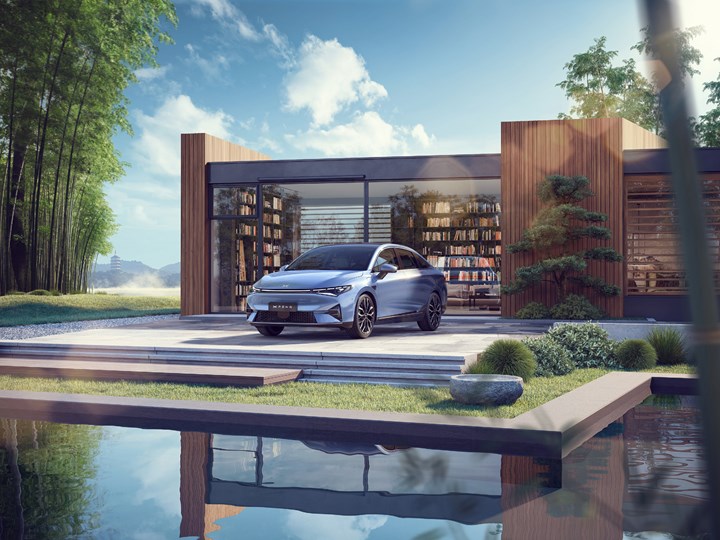
The XPeng P5. Plenty of sensors = “Smart sedan.” (Image: XPeng)
You might think that it is a bit of an exaggeration: XPeng is calling its new P5 a “smart sedan.”
But then you learn a little more.
There are six models. There are different levels of hardware that will use the XPILOT automated driving software (developed in-house) depending on the trim.
There are XPILOT 3.5 and 3.0 hardware systems.
Both include:
- Five millimeter-wave radars
- 12 ultrasonic sensors
- One sub-meter range high-precision positioning unit
- 13 autonomous driving assist cameras—the 3.5 version has high-def camera
And the 3.5 has two LiDAR units
That these are electric vehicles—with ranges, based on the NEDC protocol, of from 460 km to 600 km—almost seems beside the point.
///
Scooter Safety
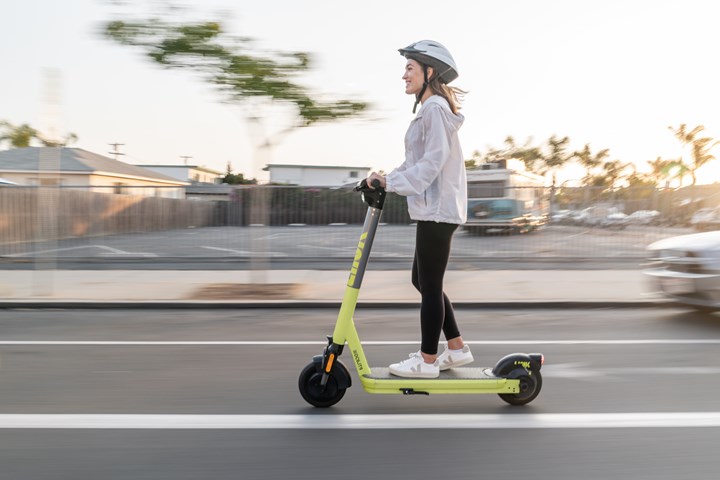
Seems odd that an e-scooter company would name itself “Superpedestrian.” (Image: Superpedestrian)
Superpedestrian, a spin-off from MIT, is behind the LINK e-scooters.
To assure that its scooters are safe, the company has acquired a scooter safety company, Navmatic, applied its Super Fusion tech, which provides sensor-fusion, and developed what it calls “Pedestrian Defense” capabilities.
Boaz Mamo, CEO and founder of Navmatic, says, “We’ve spent years at Navmatic developing the most fine-grained sensor fusion and rider behavior detection out there. With Superpedestrian’s high-quality hardware and smart system operation, we can detect how riders behave, make real-time interventions, and give cities actionable insight into the safety of their streets.”
So what can it do?
- Determine if a scooter is riding on the sidewalk, going the wrong way on a one-way street, being operated in an aggro manner
- Slow or stop the scooter based on the above
- Alert and educate riders about their behavior
And for municipalities:
- Provide information about safety conditions within particular areas
- Generate collision reports
///
Kaizen in Racing

Akio Toyoda believes in continuous improvement in racing as well as producing cars, SUVs and trucks. (Image: Toyota)
The Toyota Gazoo Racing team won the recent 6 Hours of Monza with the GR010 HYBRID hypercar, making it the third victory in a row for the vehicle, though a first for the #7 car.
What is interesting about the victory is what the team founder said to the team after the race.
Especially as that person is Akio Toyoda.
Toyoda said, in part:
“The GR010 HYBRID is a car that has just started the process of development through racing. The troubles were obvious in the race. There are good and bad types of trouble; the good ones help us to learn but any bad ones should be solved by Le Mans next month.”
Note the distinction between types of trouble.
Yes, there is trouble that can lead to learning—assuming that it is perceived this way.
Toyoda: “No matter how much preparation is done, the unexpected can always happen in a race.”
Or anywhere else.
How you handle the unexpected is the thing.
///
2020 Lexus RC-F Fuji Speedway Edition
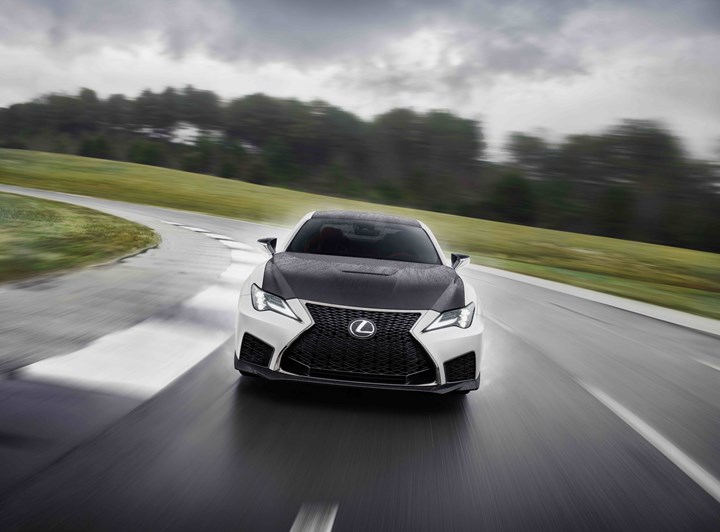
A study in carbon fiber: Lexus RC-F Fuji Speedway Edition. (Image: Lexus)
Speaking of racing and Toyota. . .
Well, the Lexus portion of the company in this case.
The 2021 Lexus RC-F Fuji Speedway Edition.
Yes, this sports coupe is a real thing, named after the racetrack that Toyota just happens to own.
While some will be impressed with what’s under the hood—a naturally aspirated 5.0-liter V8 that produces 472-hp and 395 lb-ft of torque mated to an eight-speed sport-shift transmission—others will be more impressed with the hood:
Which is a shapely slab of carbon fiber.
In fact, the roof, front spoiler, rocker-panel splitters, rear diffuser, and fixed rear wing are carbon fiber, too.
When you climb into the cabin you may be struck by the “Circuit Red” leather trimmed seats and the abundance of red Alcantara throughout.
But then you pay a bit more attention and see that there is red carbon fiber trim.
This is a celebration of light-weight materials.
The wheels are 19-inch forged alloy BBS wheels wrapped with Michelin Pilot Sport 4S tires.
There is a titanium exhaust system. There are Brembo (see item below) Carbon Ceramic Brakes.
The engineers were focused on mass reduction, all the way to deploying a compact air conditioner compressor.
But let’s not forget that this is a Lexus. As such, when you’re in the cabin you note that there is attention to detail, whether it is the way the gauges display or the windows open and close, whether it is the 10-way adjustability of the front seats or the infotech (Apple CarPlay, Android Auto, Lexus Enform WiFi).
Opt for the navigation system with Mark Levinson audio and you get elements from a 10.3-inch color display to an 835-Watt, 17-speaker system.
Realize that this car is just 54.7 inches high and there’s just 5.1 inches of ground clearance, so things like a standard blind spot monitor with rear cross-traffic alert is probably more essential than the Torsen limited slip differential—at least for one’s daily drive.
On the one hand, the notion of a daily drive in this car seems almost fanciful. Not that you couldn’t. But to the extent that this is engineered with a racetrack in mind, going for groceries (there is 10.1 cubic feet of cargo volume) is, well, strange.
That and the base MSRP of $97,100 (and the as-driven sticker of $103,250).
///
Brembo in the Valley

Even Brembo, the brake expert, is putting a presence in Silicon Valley. (Image: Brembo)
Brembo, the company whose braking systems are often visually imitated, is opening a facility in. . .Silicon Valley.
The “Brembo Inspiration Lab,” which is scheduled to be open in the fourth quarter, is going to be focused on braking.
Explains Daniele Schillaci, Brembo CEO, “We are entering and investing in this world-renowned location for high technology and innovation with the clear and ambitious goal of addressing the unprecedented challenges impacting the automotive sector. We are in an era of data science and the application of artificial intelligence, which offers us a great opportunity to build our future and strengthen our technological leadership.”
Brembo’s North American HQ and R&D center is located in Plymouth, Michigan, west of Detroit. It has North American manufacturing in Michigan, New Jersey and Monterrey, Mexico.
There is another benefit to being in the Valley: accessibility to vehicle start-ups.
///
How Many EVs Is It?
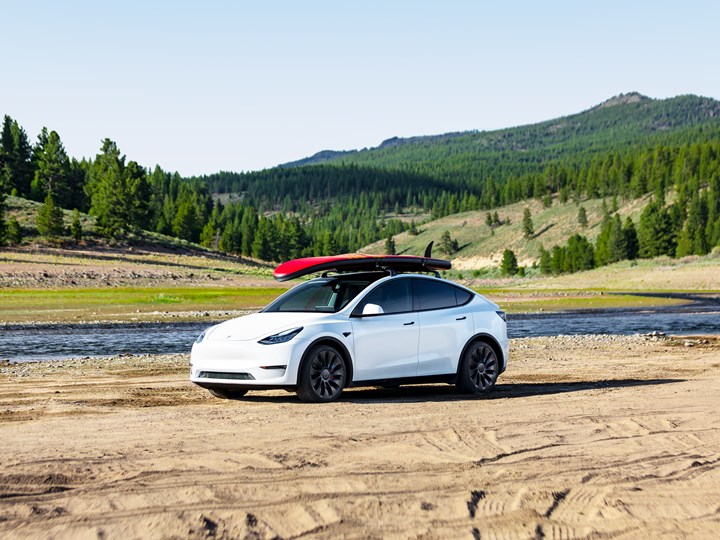
Tesla—no real surprise—dominates the U.S. EV market. In a remarkable way. (Image: Tesla)
It can’t be said more straightforwardly than this:
“The U.S. auto market has seen growth this year in nearly every segment, but no segment is growing more quickly and more relentlessly than electrified vehicles – the combined total of electric vehicles (EVs), hybrids and plug-in hybrids.”
That’s from Cox Automotive.
The company goes on to cite stats from its Kelley Blue Book operation that show in Q2 2021 there was an increase of 49.5% in total new-vehicle sales but an electrified vehicle growth of 201.1%.
What’s more, for the first time in a quarter fully electric vehicles had sales in excess of 100,000—118,233, to be more precise. That is a 254.9% increase over Q2 2020.
As for hybrids—including plug-ins—the Q2 2021 rise over Q2 2020 was a mere 181%. There were 258,028 sold.
Getting more granular. . .
- Tesla dominates the EV space. The Model Y (38,877) and Model 3 (26,680), with a combined 65,557 units, outsell the Chevy Bolt EV, Mustang Mach-E, Tesla Model X, VW ID.4, Nissan Leaf, Tesla Model S, Porsche Taycan, Audi e-tron, Volvo XC40, Hyundai Kona, Kia Niro, Hyundai Ioniq, BMW i3, Mini Cooper, Jaguar i-Pace, and Polestar 2—combined. That cumulative figure is 52,676.
- When it comes to hybrids, Toyota is the Tesla of the category. In Q2 2021 Toyota sold 147,077 hybrids, including plug-ins. Lexus had hybrid sales of 13,680. That is a combined 160,757. The whole category is 258,028, so the Toyota brands account for 62%.
///
Gas Superusers & Saving Money
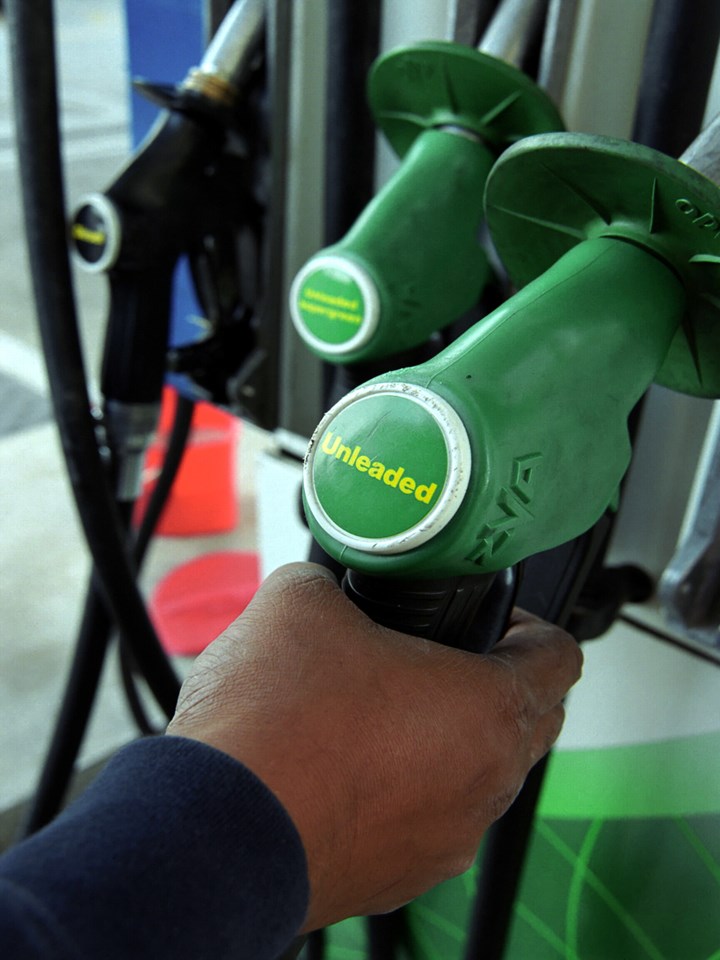
Superusers use an impressive amount of gasoline. (Image: bp)
Speaking of asymmetric numbers, the top 10% of drivers burn 32% of all of the gasoline used annually in the U.S.
The bottom 60% of drivers burn less gasoline than the top 10%.
Those are findings from Coltura, a non-profit working to make the transition from combustion to electrics.
The organization has developed a creative way to reduce the amount of gasoline burned: “superusers”—its term for that top 10% of drivers (who drive an average 30,348 miles per year)—“should be prioritized in EV charging policy and EV marketing and education initiatives.”
Superusers drive:
- Pickups: 32%
- SUVs: 32%
Superusers geographically:
- Rural: 33%
- Small town: 24%
While the pickup and SUV numbers are higher than for “Other Drivers” (17% pickups; 24% SUVs), the geographic differences aren’t great (26% rural; 24% small town).
The major metro areas for superusers:
- Houston-The Woodlands-Sugar Land, TX, 12.25% of drivers
- Detroit-Warren-Dearborn, MI, 12.30% of drivers
In both those metros superusers account for 36% of all gasoline use.
Gasoline accounts for 8% of the average superuser household budget—nearly three times the average.
Di$placement
Coltura reckons that a gasoline displacement incentive is more likely to result in a shift to EVs than the flat EV incentives the currently exist.
For example, based on a rate of $10 per gallon of annual gasoline consumption, a superuser driving a 2010 Toyota Tacoma 45,000 miles per year would offset the use of 2,335 gallons of gasoline per year, which would result in an EV incentive of $23,350 through the Coltura approach. The current federal flat rate of $7,500 that would mean a savings of just $3 per gallon for that Tacoma driver.
Coltura calculates that “the current $7,500 federal EV tax incentive would cover 20% of the average price of a full-size electric car but only 14% of the average price of a full-size electric pickup.”
Why Focus on Superusers?
Coltura calculates that to cut light-duty emissions in half by 2030:
“If the heaviest gasoline users converted to EVs first, 97 million of America’s 253 million light duty vehicles would need to switch to EVs by 2030, or about 11 million per year.
“If all drivers converted to EVs at the same rate regardless of how much gasoline they use, it would take 176 million vehicles switching to EVs by 2030 to hit the emissions goal.
“If superusers were the last drivers to switch to EVs, it would take 233 million vehicles, or essentially all non-superuser vehicles switching to EVs, to hit the goal.”
More surprising than that is the cost savings the $10 per gallon of gasoline displaced annually amount results in: “the cost of achieving a 50% emissions reduction from light duty vehicles would be about $800 billion.”
However. . .
“[U]nder the current federal flat incentive of $7,500 per EV purchased, assuming all drivers adopt EVs at the same rate regardless of how much gasoline they use, the cost of achieving the 50% emissions cut is roughly $1.32 trillion”
Or a $520-billion cost save through the superuser-focused approach.
///
Allison’s Serious Transmission
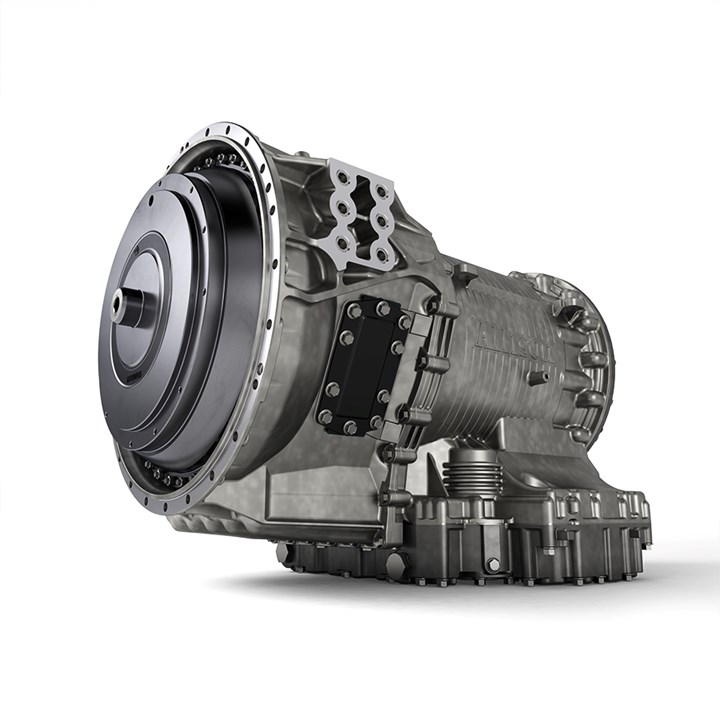
Allison TerraTran: 3,025 lb-ft of torque. A serious transmission. (Image: Allison Transmission)
There are transmissions. . .and then there are transmissions.
Allison Transmission has launched the TerraTran, which features seven forward and two reverse speeds (one of which is “fast reverse”).
It has a maximum power capacity of 800 hp and torque capability up to 3,025 lb-ft.
Oh, and it has been engineered for the global construction and mining market.
The first application of the TerraTran is in the all-terrain crane produced by Xuzhou Construction Machinery Group (XCMG) of China.
RELATED CONTENT
-
Flying Car Flight of Fancy Gets Real
People have been dreaming about flying cars since the early days of the auto and aircraft industries.
-
Toyota Employees to Aid Michigan V2X Research
Toyota Motor Corp. is encouraging employees at its research and development center near Ann Arbor, Mich., to participate in an on-going program there to test connected vehicle technologies.
-
On Electric Pickups, Flying Taxis, and Auto Industry Transformation
Ford goes for vertical integration, DENSO and Honeywell take to the skies, how suppliers feel about their customers, how vehicle customers feel about shopping, and insights from a software exec


.jpg;width=70;height=70;mode=crop)






